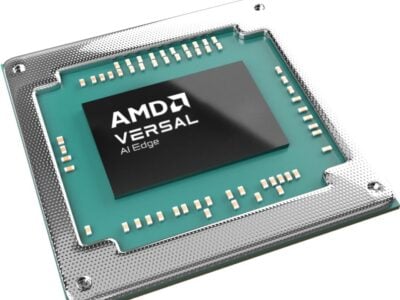
HPE completes Cray integration, ships ARM supercomputer
“The integration of Cray into Hewlett Packard Enterprise is effectively complete for our people, our critical business systems, our roadmaps, and our brands. It’s an integration milestone we call Business Day One,” said Peter Ungaro, Senior Vice President and General Manager of HPC and Mission Critical Solutions at Hewlett Packard Enterprise and the former CEO at Cray.
The focus is on exascale computing, he says.
“This new era of computing is entirely different,” he said. “It isn’t about single, gigantic supercomputers or specific, one-of-a-kind technologies. This new era is born of the massive growth in data and the need for converged use of modeling and simulation with AI and analytics in applications and workloads to power discovery and digital transformation in enterprises of all shapes and sizes.”
The HPE Cray supercomputer line combines HPE and Cray technologies, including a few from Hewlett Packard Labs. This includes Cray’s Shasta architecture which are being developed for the first three US exascale systems based around Intel x86 processors and will be will be supported more broadly across various HPE products. This also sees the ARM-based supercomputer technology move to the HPE Apollo line that has just started shipping this month.
Previously announced as a Cray CS500, the HPE Apollo 80 system is based on Fujitsu’s 7nm A64FX processor and will be available with HPE’s cluster management solution (HPCM) and compiler (Cray Programming Environment).
Cray was instrumental in deploying early Arm HPC systems. The Isambard 1 supercomputer designed by Cray in partnership with the GW4 Alliance and the Met Office, the United Kingdom’s national weather service, was the first Arm-based supercomputer in the world to go into production use. Isambard 1 contains 168 dual processor nodes based on the Marvell ThunderX2 processor delivering 10,752 Armv8 cores.
HPE recently developed the HPE Apollo 70 based on the Marvell (Cavium) ThunderX2 processor specifically for the HPC market. The HPE Apollo 70 was the building block for Sandia Lab’s Astra ARM-based supercomputing cluster with 2,592 compute nodes and a theoretical peak performance of 2.3PFLOPS.
Cray worked with Fujitsu and ARM on the A64FX on the Armv8-A SVE architecture. The A64FX has 48 cores each with two 512 bit-wide SIMD SVE units enabling the processor to deliver over 3.1 double precision teraflops.
The HPE Apollo 80 is a compact, cluster-ready solution with eight single processor servers in a standard 19” 2U chassis. The University of Bristol will use the A64FX-based system next year. “We’ve been on a journey toward Arm-based supercomputing and the new HPE and Fujitsu Arm system will bring us closer to that reality,” said Simon McIntosh-Smith, professor of HPC at the university. “We think the A64FX system will be the exciting core of the new Isambard 2 system which is going live in the next few months.”
Other HPE Apollo 80 customers include Leibniz Supercomputing Centre (LRZ), the Los Alamos National Laboratory, Oak Ridge National Laboratory, RIKEN Cenrte for Computational Science, Stony Brook University, and the Centre for Development of Advanced Computing (CDAC).
Related supercomputer articles
- ATOS TO BUILD UK’S LARGEST AI MACHINE
- MICROSOFT BACKS NVIDIA FOR AI IN THE CLOUD
- NVIDIA TEAMS FOR MOST POWERFUL ACADEMIC AI SYSTEM
Other articles on eeNews Europe
- ARM signs three year US defence deal
- Blaize details architecture of GSP edge AI chip
- Top engineering jobs in demand across Europe
- US embargo causes Huawei to run out of Kirin processors
- 5nm ASIC designs start
 If you enjoyed this article, you will like the following ones: don't miss them by subscribing to :
eeNews on Google News
If you enjoyed this article, you will like the following ones: don't miss them by subscribing to :
eeNews on Google News



